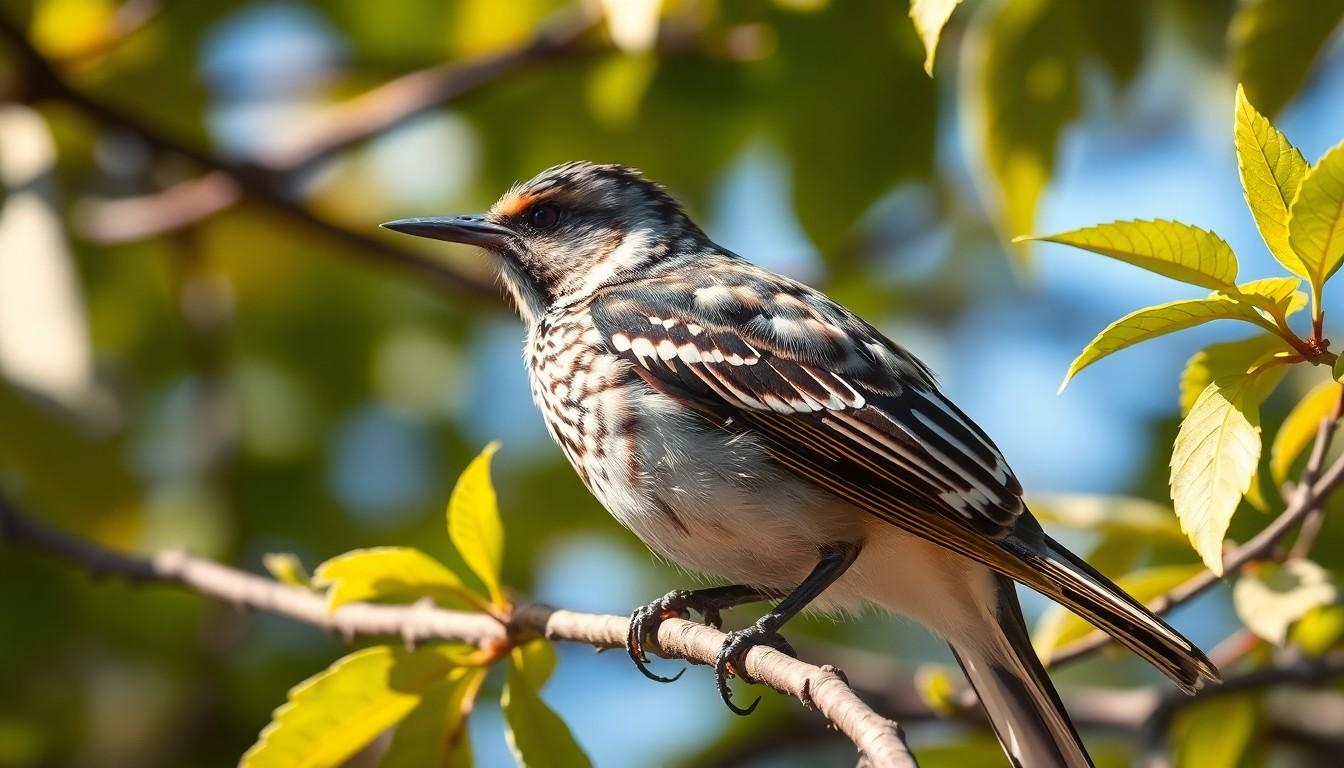Drawing can feel like a daunting task, especially when it comes to capturing the beauty of a mockingbird. But fear not! With a few simple techniques, anyone can create an impressive mockingbird drawing that’ll make even the most seasoned artists take notice. Whether you’re a budding Picasso or just someone who doodles on napkins, this guide is here to help transform those stick figures into feathered masterpieces.
Mockingbird Drawing Easy
Mockingbird drawing can seem daunting, yet it offers an enriching experience that cultivates artistic skills. Artists at any level benefit from mastering simple techniques that make the process approachable and enjoyable. Beginning with basic shapes, sketching a mockingbird requires focusing on proportions to create a balanced outline.
Proportions serve as the foundation for a successful drawing. Utilize circles and ovals to outline the body and head, ensuring the dimensions are accurate relative to one another. Detailing follows the basic outline; adding feathers and unique markings enhances realism.
Observing real mockingbirds aids in understanding their distinct features. References such as photographs or videos provide insights into their coloration and posture. These references support artists in reproducing authentic characteristics.
Incorporating shading adds depth and dimension to the drawing. Light and shadow play a crucial role in bringing a two-dimensional image to life. Experimenting with various shading techniques, like cross-hatching or stippling, enhances the overall visual appeal.
Digital tools offer additional avenues for creating mockingbird drawings. Software such as Adobe Illustrator or Procreate enables artists to manipulate and refine their work easily. This flexibility encourages experimentation with colors and styles, resulting in unique representations.
Lastly, practice remains essential for improvement. Regular sketches develop muscles memory, leading to greater confidence and skill over time. Continuous learning transforms initial attempts into detailed and beautiful mockingbird representations. Cultivating patience and dedication ultimately elevates the ability to draw this captivating bird.
Step-by-Step Guide to Easy Mockingbird Drawing

Creating a mockingbird drawing can be straightforward with the right techniques. Follow these steps for a successful representation of this beautiful bird.
Materials Needed
For a successful drawing, gather essential materials. Pencils of varying hardness allow for detailed sketching and shading. Erasers help correct any mistakes during the process. Quality drawing paper provides a durable surface to work on. Fine-tip pens can enhance outlines and details, while colored pencils or markers add vibrancy. Optionally, a sketchbook offers a convenient way to practice and refine skills. Digital tools, like a tablet and stylus, enable experimentation with color and form.
Basic Shapes
Starting the drawing requires establishing basic shapes. Use circles to represent the head and body, creating a solid framework. Ovals help define the wings and tail for a more realistic proportion. Adjust these shapes to form a balanced outline that captures the mockingbird’s posture. Begin with light pencil strokes to easily modify as needed. Focus on maintaining symmetry, as the mockingbird’s body has harmonious proportions. Gradually refine the shapes, merging them to create a cohesive structure.
Adding Details
Detailing elevates the drawing from basic to impressive. Use reference images to accurately replicate the bird’s unique features. Incorporate feather patterns with short, curved lines, capturing texture and movement. Depict distinctive markings on the wings and breast to enhance realism. Pay attention to the eye, ensuring it appears expressive and lively. Utilizing shading techniques like cross-hatching can add depth to the wings and body. Gradually build layers of detail to create a striking final image, reminding the artist to stay patient and consistent throughout the process.
Tips for Creating a Successful Mockingbird Drawing
Creating a mockingbird drawing can be enjoyable and fulfilling. The right techniques significantly improve the final piece.
Common Mistakes to Avoid
Omitting basic shapes leads to imbalanced drawings. Beginners often overlook proportions, resulting in unrealistic depictions. Neglecting to observe reference images can cause inaccuracies in feather placement and coloration. Overcomplicating the initial sketch by adding too much detail early on hinders progress. Ignoring light and shadow effects misses opportunities for depth in the artwork. Practice focusing on these areas to avoid common pitfalls.
Techniques for Better Results
Starting with light pencil strokes establishes a solid foundation. Using reference images aids in capturing distinctive features accurately. Incorporating different pencil hardness allows for varied line quality and texture. Experimenting with shading techniques, such as cross-hatching or stippling, enhances realism. Adding color with colored pencils or digital tools creates vibrancy. Refining the details, particularly feather patterns, elevates the overall quality of the drawing. Regular practice strengthens skills and builds confidence in artistic ability.
Inspirational Examples of Mockingbird Art
Exploring various artworks of mockingbirds can spark creativity in drawing. One popular example features a mockingbird perched on a branch, showcasing intricate feather details and vibrant colors. Artists often use watercolors to portray the subtle gradients in the bird’s plumage, enhancing the visual appeal.
Another inspiring piece reveals a mockingbird in flight. The dynamic pose captures the essence of movement, with blurred lines conveying speed. Such techniques can help beginners practice shapes and proportions before focusing on finer details.
Digital illustrations also present captivating interpretations. Artists leverage digital tools to create smooth lines and bright hues, making mockingbirds appear lifelike. These modern methods can simplify the drawing process while allowing for experimentation with styles and colors.
Social media platforms frequently showcase mockingbird sketches and paintings. Users post their renditions, often sharing step-by-step phases of their creative journeys. This allows others to learn from real experiences and pick up new techniques.
Art communities may feature contests focused on mockingbird imagery. Participants submit their works, which highlights varying interpretations and methods used in creating these drawings. Observing diverse approaches fosters learning and inspires individuals to develop their unique styles.
Examine how different artists portray mockingbirds through realism and abstraction. Some depict highly detailed representations, while others opt for minimalist designs. Such variations illustrate the versatile nature of mockingbird art, offering fresh ideas for personal projects.
Inspiration can also come from historical art. Classical representations of mockingbirds often emphasize their place in nature, reflecting craftsmanship and attention to detail. Studying these pieces can enhance understanding and appreciation of this bird’s artistic value.
Conclusion
Embracing the journey of mockingbird drawing can be both rewarding and enjoyable. By focusing on basic shapes and proportions, anyone can create a stunning representation of this beautiful bird. The techniques discussed not only enhance drawing skills but also foster a deeper appreciation for artistic expression.
With consistent practice and a willingness to experiment, artists can elevate their work to new heights. Whether using traditional methods or digital tools, the key lies in patience and dedication. As individuals explore their creativity, they’ll find that each mockingbird drawing becomes a unique reflection of their artistic journey.

